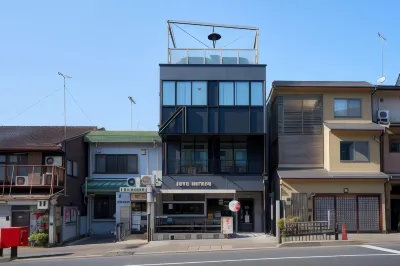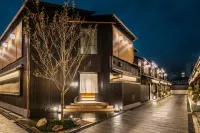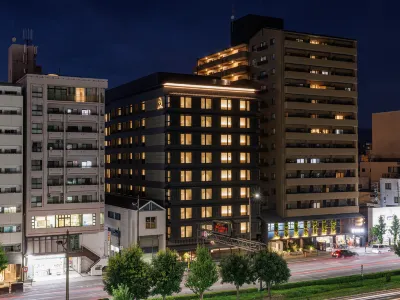
Search Your Kyoto Hotels
Enter your dates for the latest hotel rates and availability.
1627 hotels to stay in Kyoto































Kyoto Travel Guide for First-time Visitors: Top Attractions, Transport Options & Tips
Introduction to Kyoto
Kyoto, the former capital of Japan, is a vibrant city steeped in history and rich cultural heritage. Located in the Kansai region, it is known for its stunning temples, shrines, traditional wooden houses, and beautiful gardens. With its rich history, stunning architecture, and beautiful natural surroundings, Kyoto offers a truly unforgettable experience for first-time visitors to Japan.
Where to Stay in Kyoto?
You don't have to worry about accommodations when traveling to Kyoto. Here, there are more than 1438 hotels for you to choose from.
- There are 48 five-star hotels in Kyoto at an average price of 423 USD per night.
- There are 151 four-star hotels in Kyoto at an average price of 255 USD per night.
- There are 458 three-star hotels in Kyoto at an average price of 163 USD per night.
- There are 465 two-star hotels in Kyoto at an average price of 126 USD per night.
There are many well-known chain hotels in Kyoto. Westin is the most popular brand among tourists. New Miyako Hotel Kyoto is one of the most popular hotels in Kyoto. If you're still unsure, Trip.com recommends Rihga Royal Hotel Kyoto.
Must-Visit Attractions for First-Time Visitors
- Fushimi Inari Taisha: This iconic Shinto shrine is famous for its thousands of vibrant orange torii gates that create a mesmerizing tunnel-like path up the sacred Mount Inari. It is a must-visit for first-time visitors to Kyoto, offering a unique and memorable experience.
- Kinkaku-ji: One of Kyoto's most famous landmarks, the Golden Pavilion is a stunning Zen Buddhist temple covered in gold leaf. The temple is surrounded by beautiful gardens and a reflective pond, making it a picturesque spot for photography.
- Kiyomizu-dera Temple: This historic Buddhist temple is one of Kyoto's most popular attractions, offering panoramic views of the city from its hillside location. The temple's main hall features a large wooden terrace supported by tall pillars, making it an architectural marvel.
- Nijo Castle: A UNESCO World Heritage Site, Nijo Castle is a well-preserved example of Japanese feudal architecture. The castle features beautiful gardens, moats, and impressive palace buildings with intricate wood carvings and wall paintings.
- Gion District: This historic geisha district is known for its traditional wooden machiya houses, teahouses, and narrow streets. Visitors can stroll through the charming streets, dine at local restaurants, and may even catch a glimpse of a geisha or maiko (apprentice geisha) on their way to an engagement.
Transportation in Kyoto
Kyoto offers a variety of transport options for locals and tourists, including buses, subway, taxis, etc.
For those traveling for business and tourism, Kyoto Airport is the preferred choice when visiting Kyoto. It's easy to reach Kyoto. The city can be reached by plane, train, and car.
Kyoto Station is the city's transportation hub. It's one of Japan's largest stations and a stop on the Tokaido Shinkansen line, connecting Kyoto with Tokyo and Osaka.
- Buses: The city has an extensive bus network, which is often the best way to reach Kyoto's tourist attractions. The flat fare for adults within the city is 230 yen.
- Subway: Kyoto's subway system consists of two lines: the Karasuma Line, running north-south, and the Tozai Line, running east-west. It's not as extensive as in other cities, but it's useful for certain destinations.
- Taxis: Taxis are plentiful and can be hailed on the street, but they're more expensive than other forms of transport. They're a good option if you're traveling in a group or have a lot of luggage.
- Bicycles: Kyoto is a bike-friendly city, and many locals use bicycles for daily commuting. There are numerous places where you can rent a bike for the day.
Better to Know Before Visiting Kyoto
- Language: While some people in Kyoto speak English, especially in tourist areas, it's helpful to learn a few basic Japanese phrases.
- Currency: The currency in Japan is the Yen (JPY). Credit cards are accepted in many places, but it's always a good idea to have some cash on hand, especially for smaller shops and restaurants.
- Etiquette: Japanese culture is steeped in tradition and has many etiquette rules. For example, it's considered rude to eat or drink while walking in public. Also, remember to remove your shoes when entering someone's home or certain traditional restaurants and temples.
- Sightseeing: Kyoto is famous for its temples, shrines, and gardens. Some of the most popular include Kinkaku-ji (Golden Pavilion), Fushimi Inari Shrine, and the Arashiyama Bamboo Grove.
- Weather: Kyoto has a humid subtropical climate. Summers are hot and humid, while winters are relatively cold with occasional snowfall. The best times to visit are spring (for cherry blossoms) and autumn (for fall foliage)
What to Eat in Kyoto
Kyoto is famous for its traditional Japanese cuisine, known as Kyo-ryori, which includes a variety of unique and seasonal dishes. Here are some must-try foods and dishe:
- Kaiseki Ryori: This is a traditional multi-course Japanese dinner that emphasizes seasonal ingredients, artful presentation, and balance of taste. It's a culinary experience that reflects the Japanese aesthetic.
- Tofu Specialties: Kyoto is known for its high-quality tofu and yuba (tofu skin). You can try dishes like yudofu (hot tofu), which is often served in a light broth and enjoyed with various condiments.
- Matcha: Kyoto is the heart of Japan's tea culture, and you can enjoy matcha (powdered green tea) in many forms, from traditional tea ceremonies to matcha-flavored sweets like ice cream, cakes, and mochi.
- Kyoto Vegetables (Kyo-yasai): These are traditional vegetables that are specific to the Kyoto area. They are often used in local dishes and are known for their quality and flavor.
- Sushi: While not unique to Kyoto, sushi is a must-try in Japan. Kyoto offers its own style, such as sabazushi (mackerel sushi) and other types of pressed sushi.
- Ramen: Kyoto has its own style of ramen, typically a lighter soup than other regions. Look for Kyoto-style chicken broth ramen or the unique vegetarian shojin ramen.
Best Time to Visit Kyoto
The best time to visit Kyoto is in the spring (March to May) and autumn (October to November). During these periods, the weather is mild and the city is beautifully adorned with cherry blossoms in spring and vibrant fall colors in autumn.
Avoid Golden Week (late April to early May) and Obon (mid-August) as these are major holiday periods in Japan and can be particularly crowded.
Average Temperature
• January to March: 8.0°C during the day, 3.33°C at night
• April to June: 20.17°C during the day, 15.17°C at night
• July to September: 28.58°C during the day, 23.75°C at night
• October to December: 15.25°C during the day, 11.08°C at night
Average seasonal Rainfall
• Spring: 76.67 cm
• Summer: 175.0 cm
• Autumn: 190.0 cm
• Winter: 88.33 cm
Most-booked Kyoto hotels
Best Kyoto hotels with breakfast
Find best four-star Kyoto hotels
Read reviews of guests who stayed at Kyoto hotels
What travelers said about Kyoto attractions
FAQs About Kyoto Hotels
What are some of the best hotels in Kyoto?
How much is the average price for hotels in Kyoto?
What luxury hotels in Kyoto are recommended ?
What are the best hotels with high-quality breakfasts in Kyoto?
What are the best hotels with fitness facilities in Kyoto?
What are the best pet-friendly hotels in Kyoto?
What hotels in Kyoto provide swimming pools?
What are the best hotels with free Wi-Fi in Kyoto?
What are the best hot spring hotels in Kyoto?
What hotels in Kyoto provide airport transfer services?
What are the best hotels with a spa in Kyoto?
What hotels in Kyoto are good for couples?
What promotions are available for hotels in Kyoto?
Hotel Info for Tourists
| Highest Price | $1,764 |
|---|---|
| Lowest Price | $32 |
| Number of Reviews | 73,261 |
| Number of Hotels | 8,328 |
| Average Price (Weekdays) | $271 |
| Average Price (Weekends) | $298 |